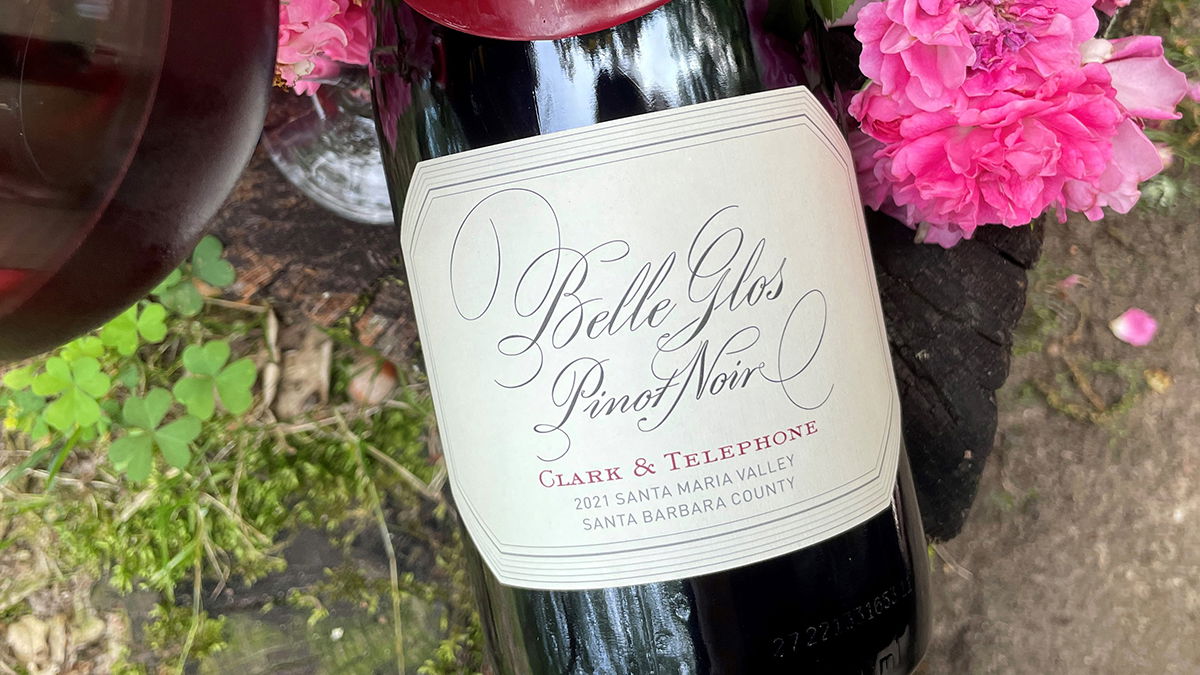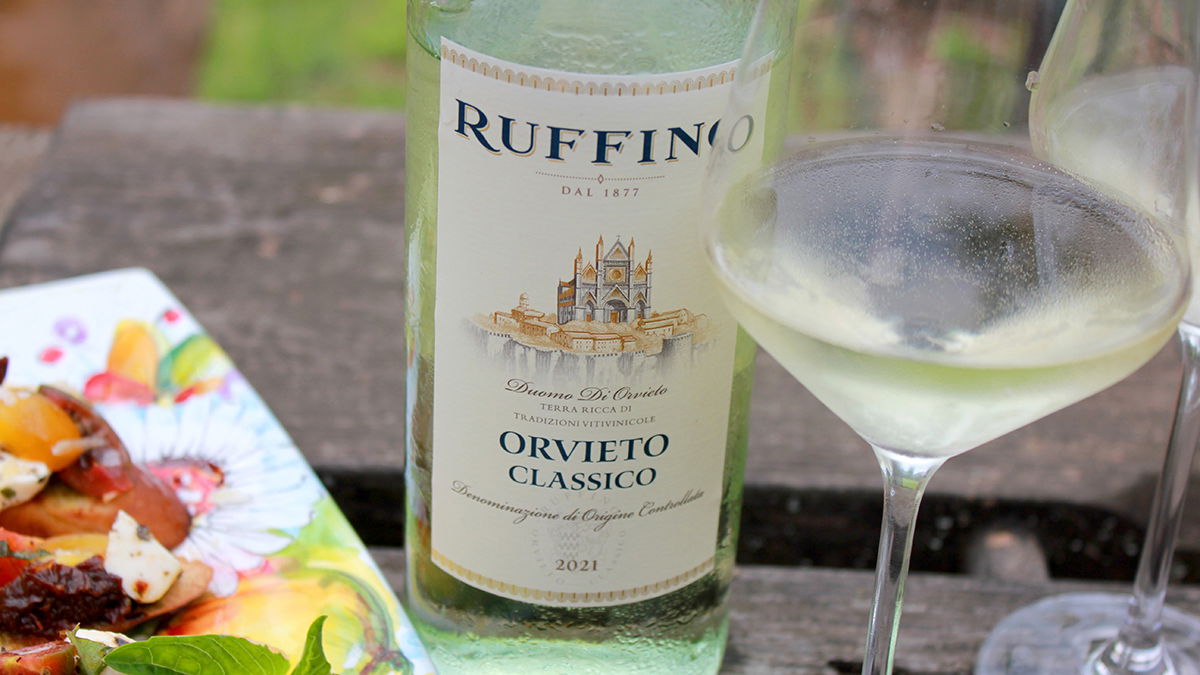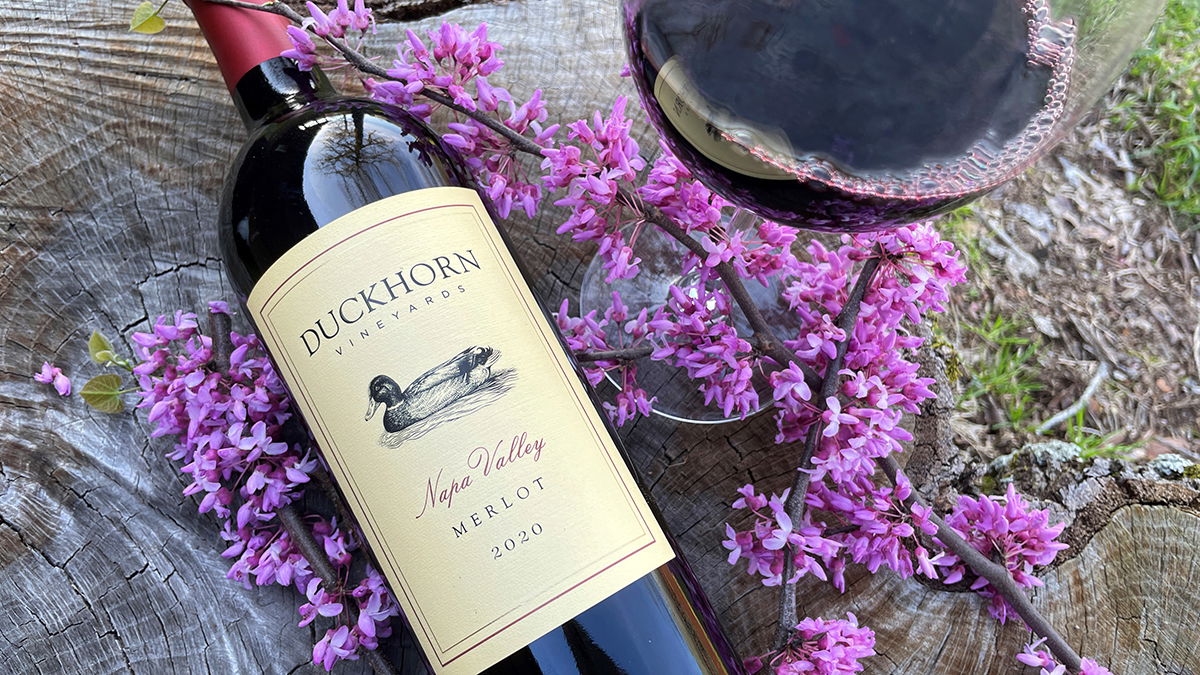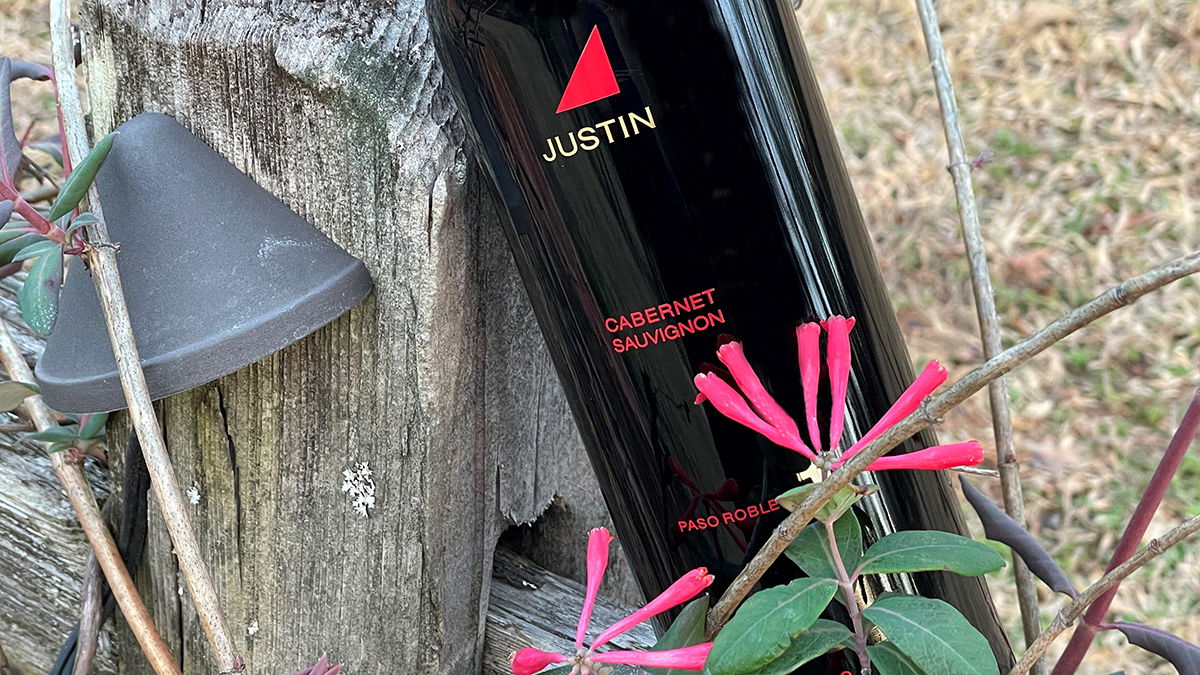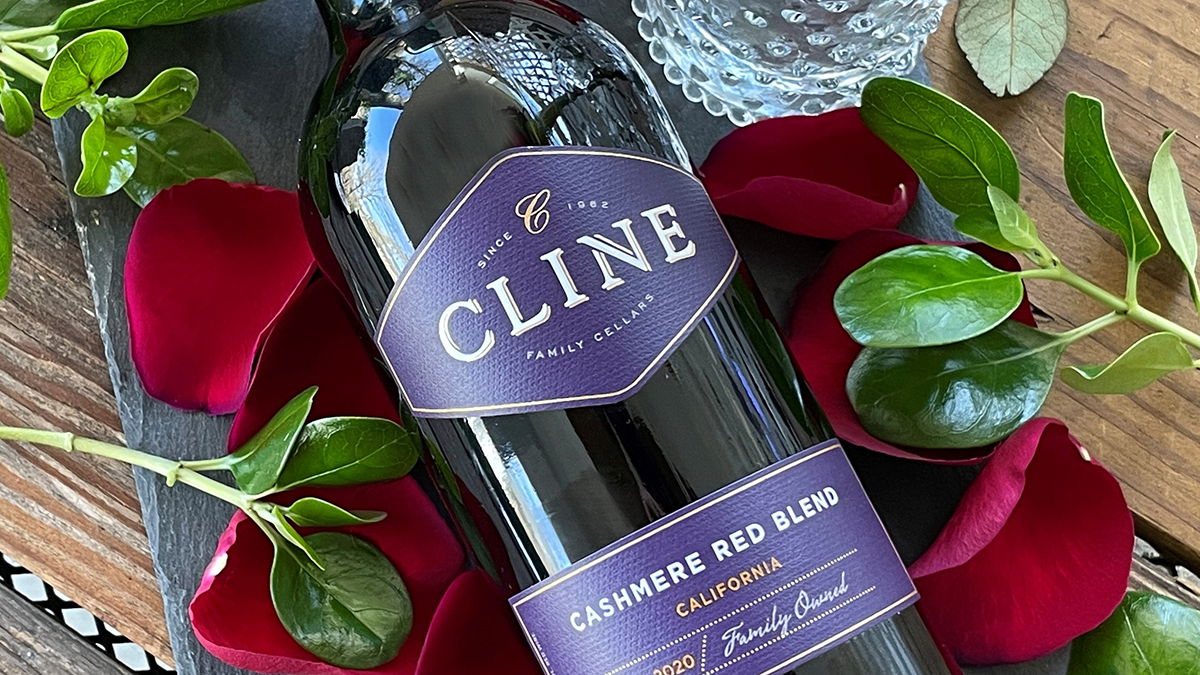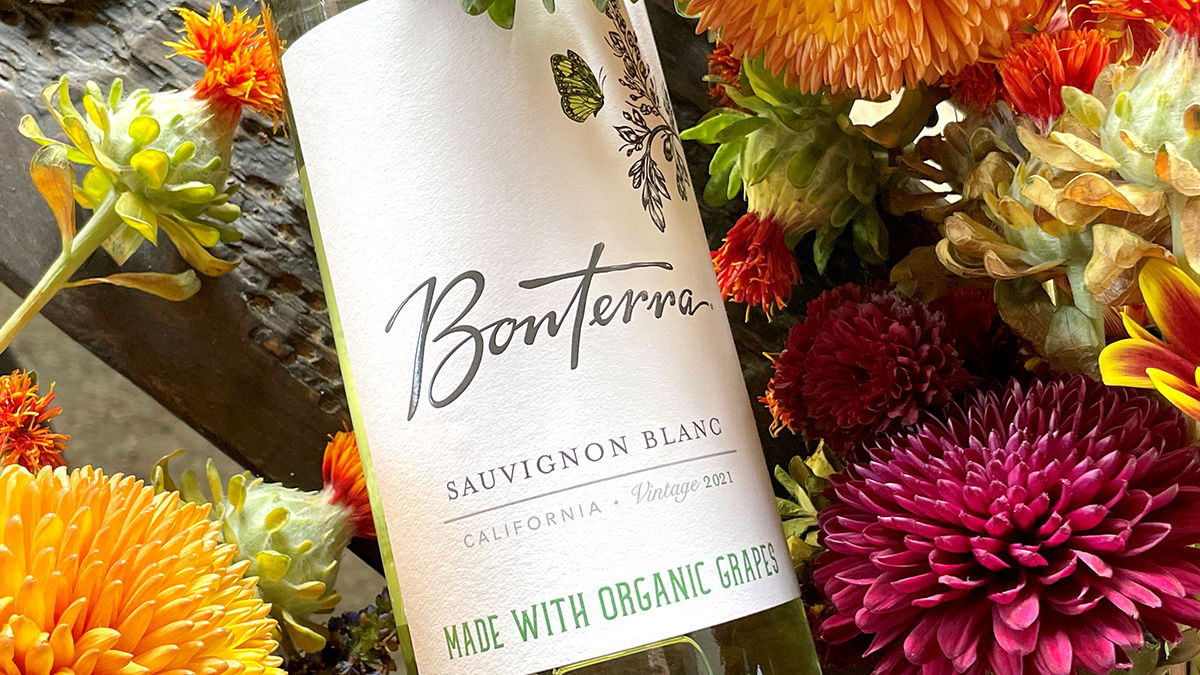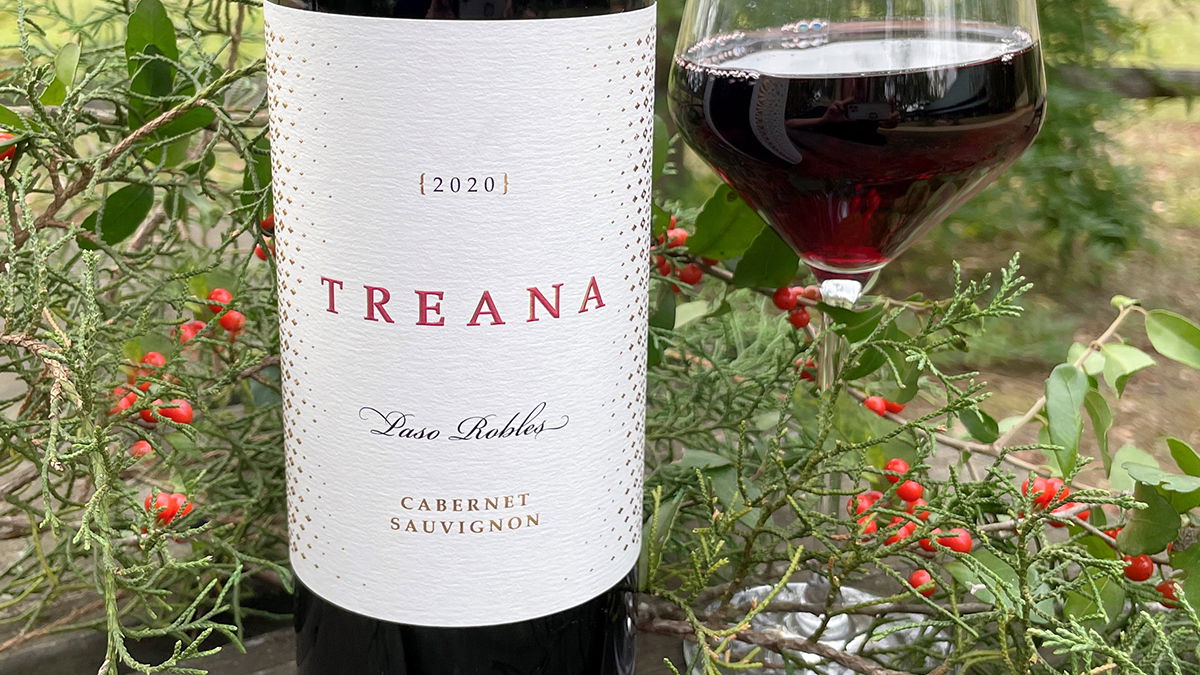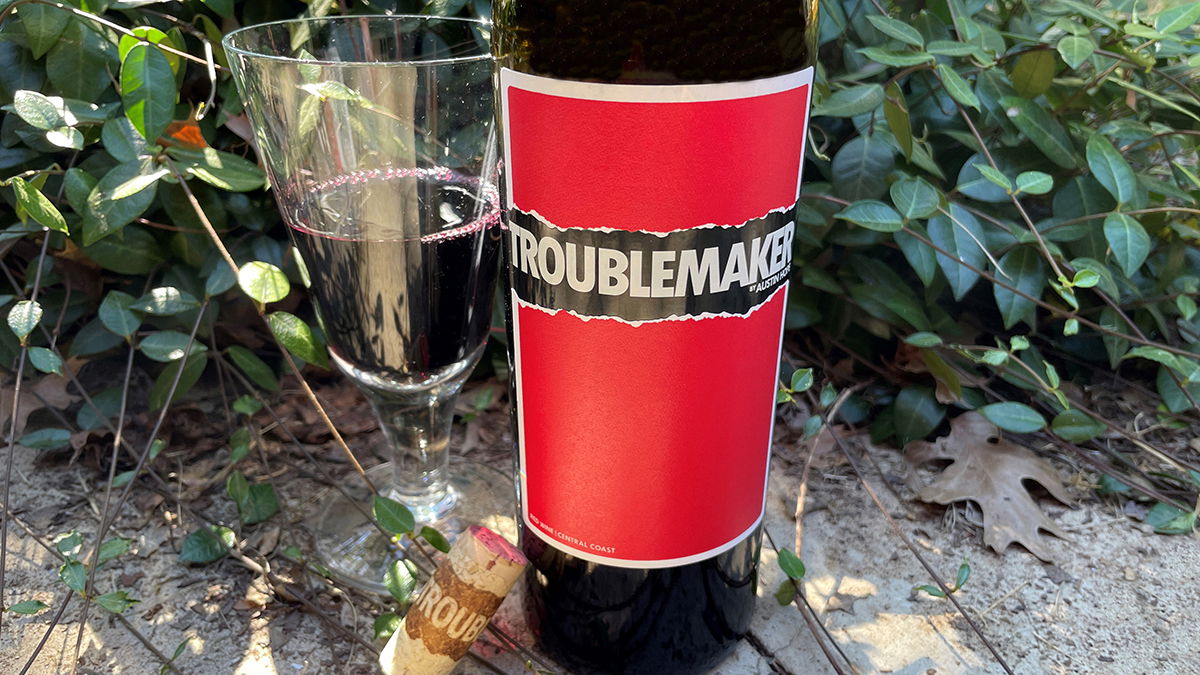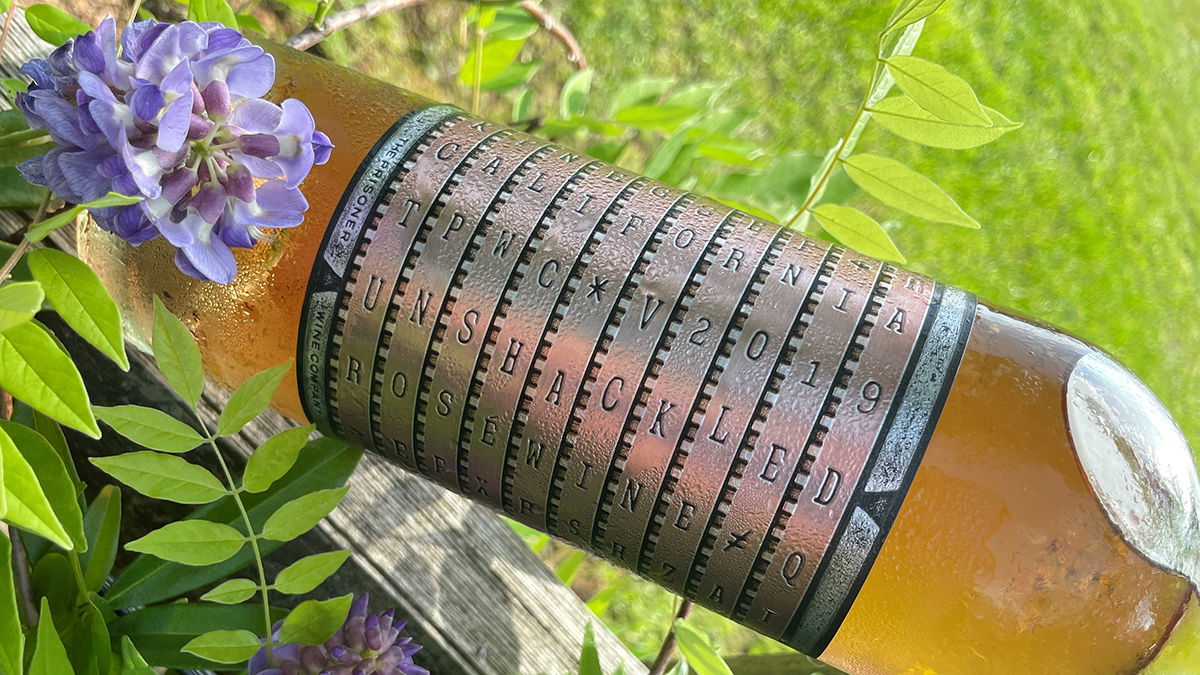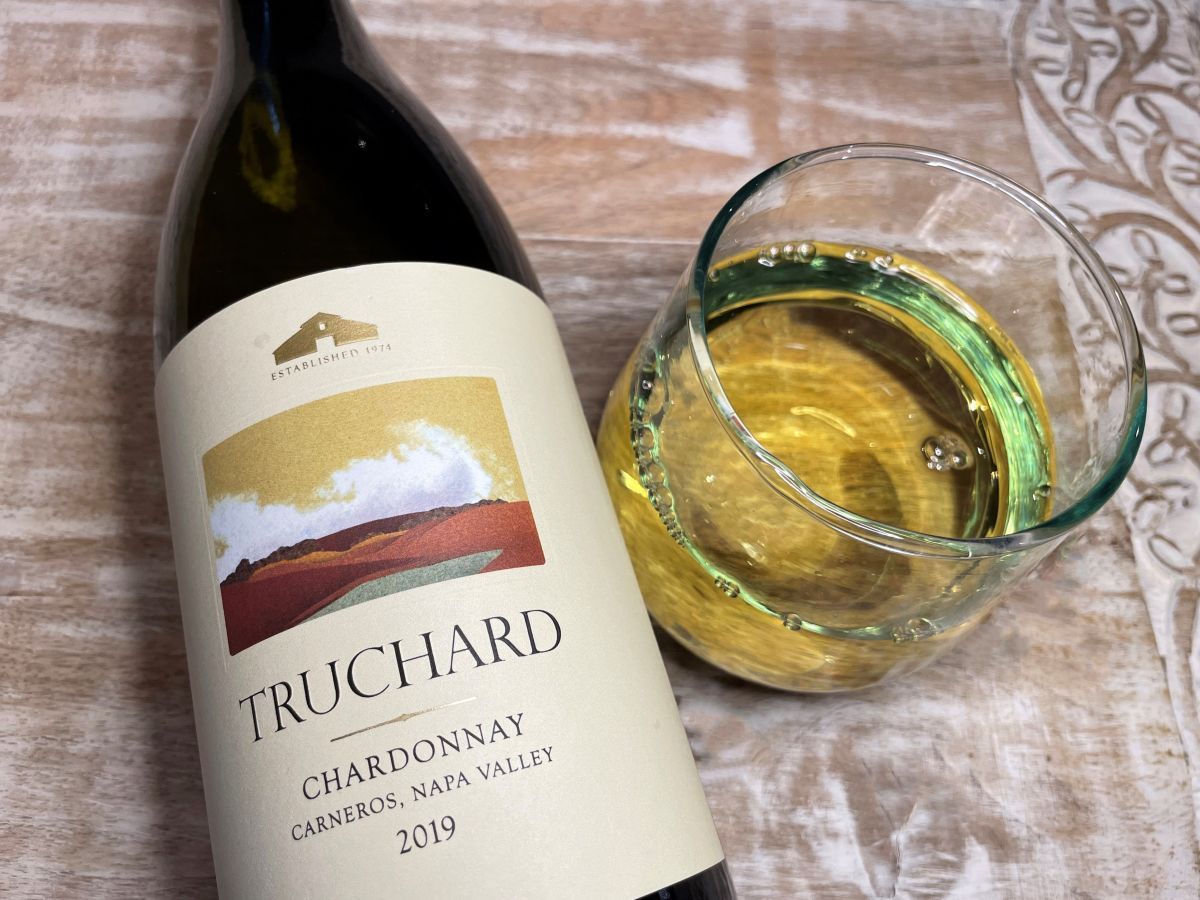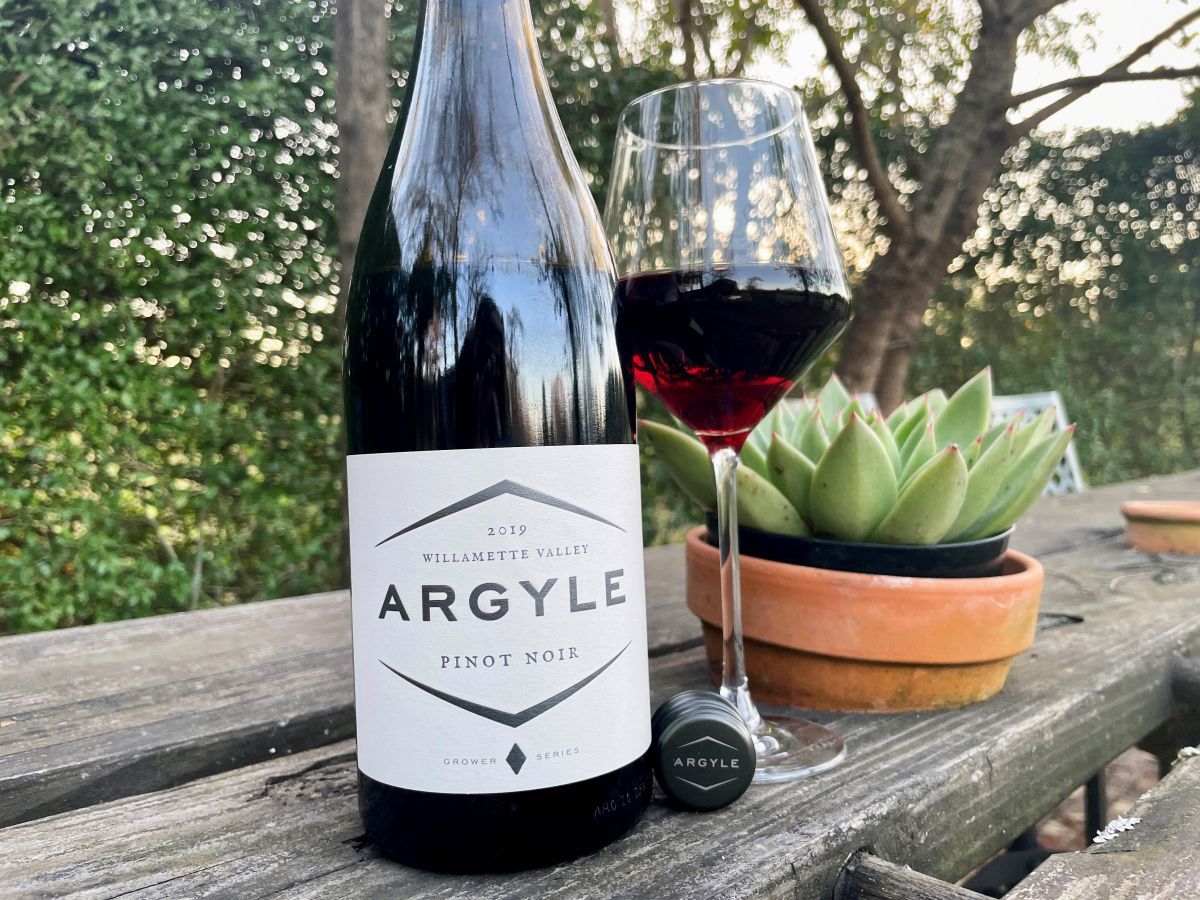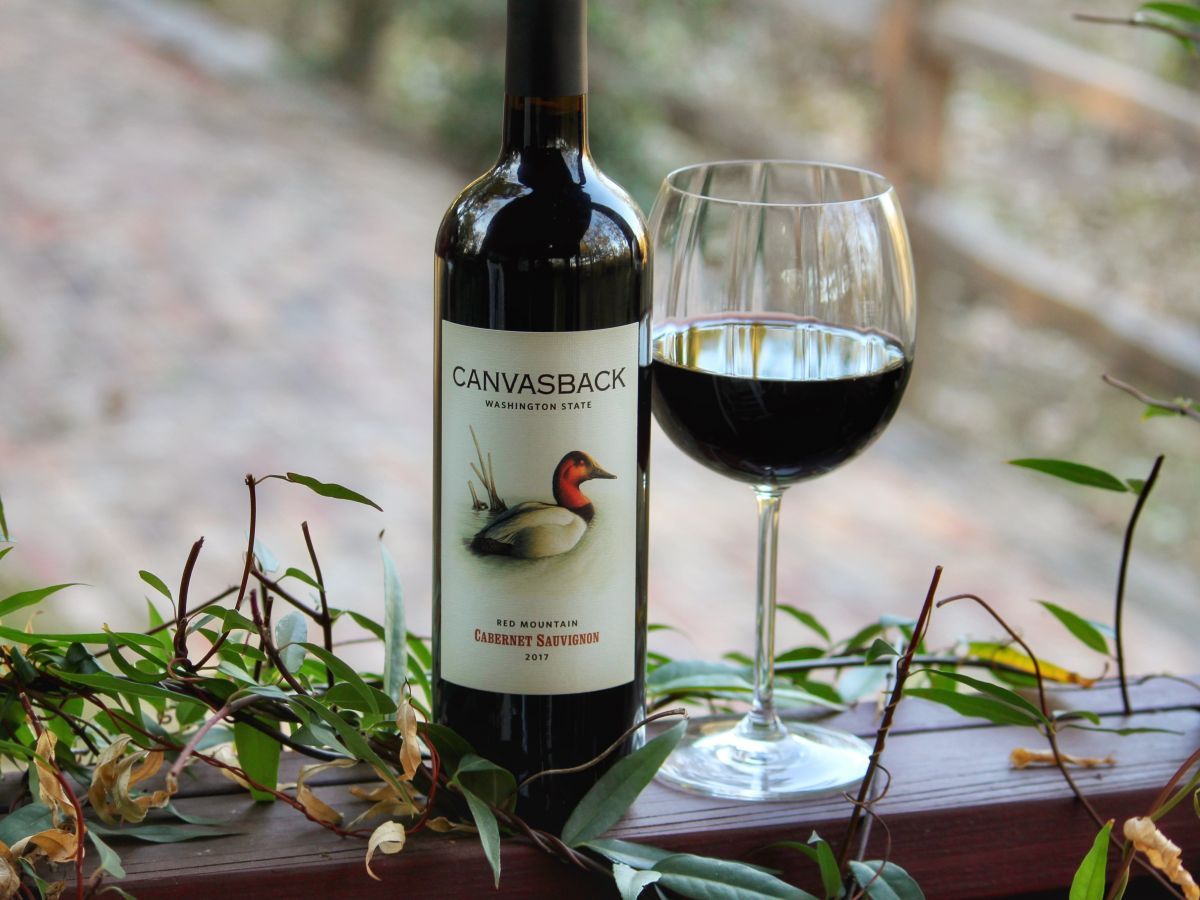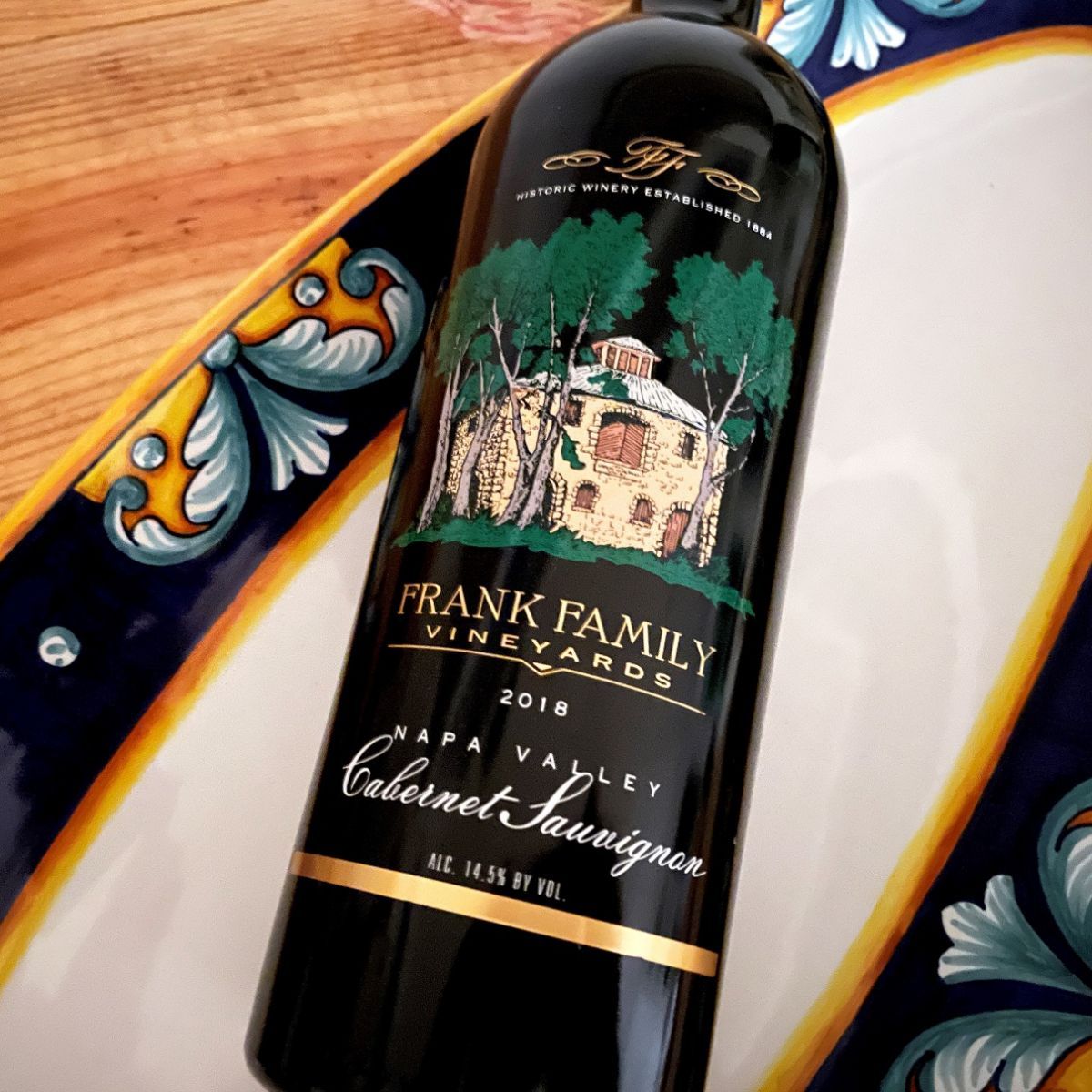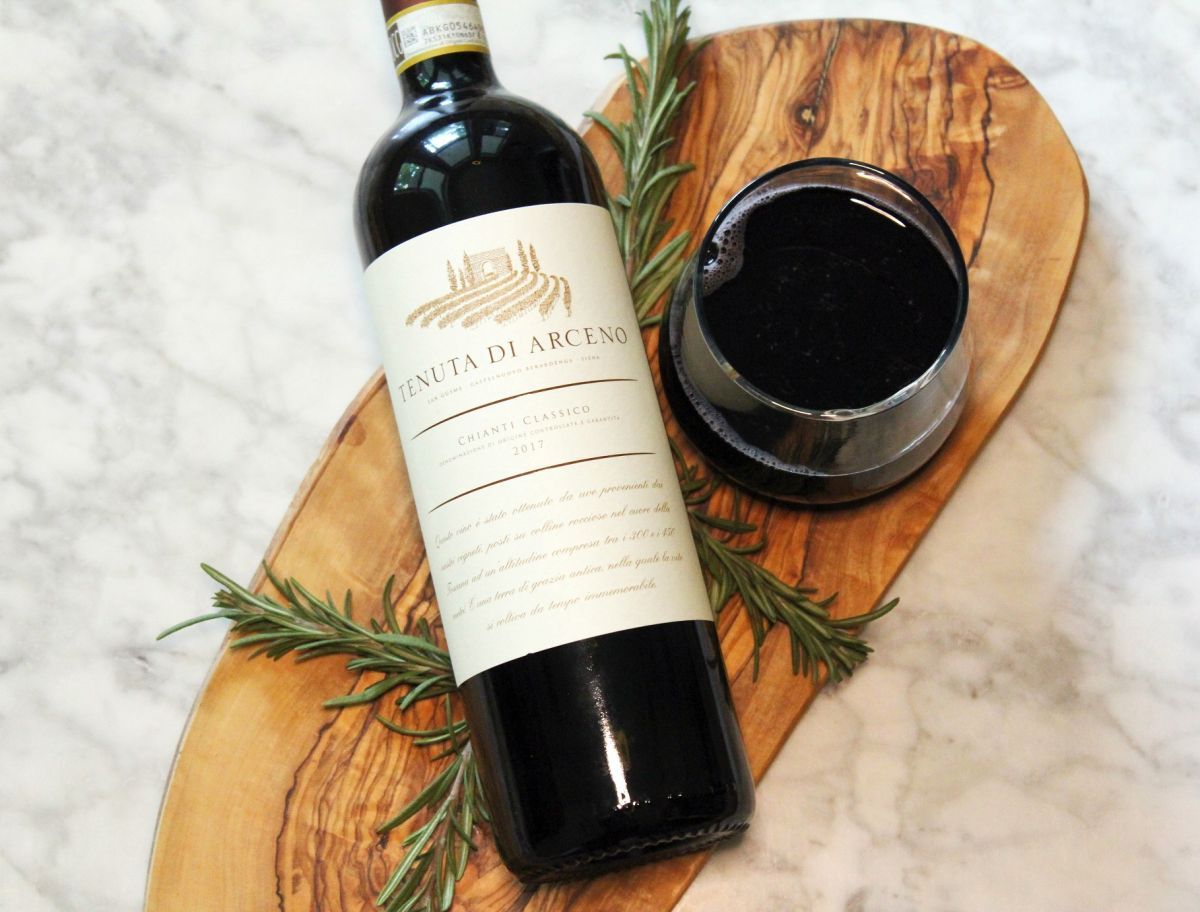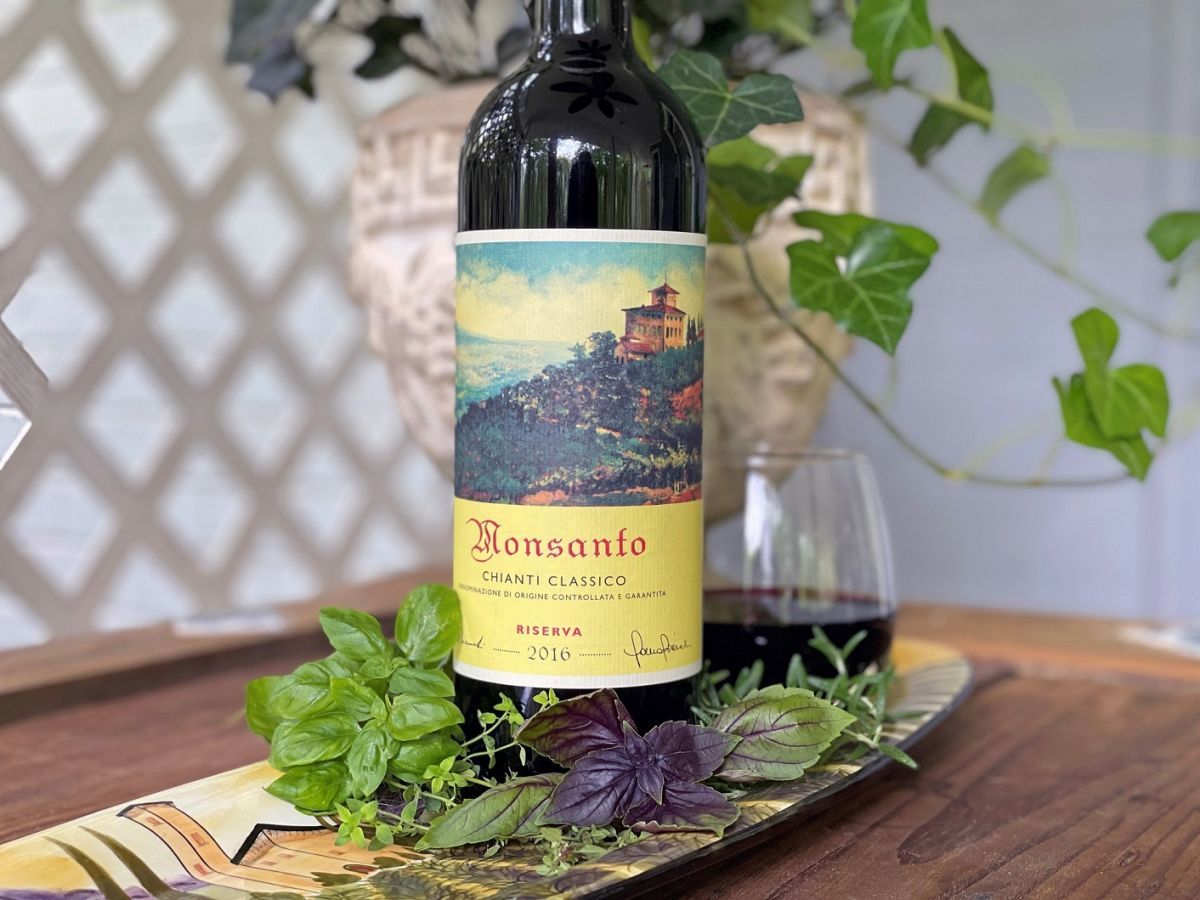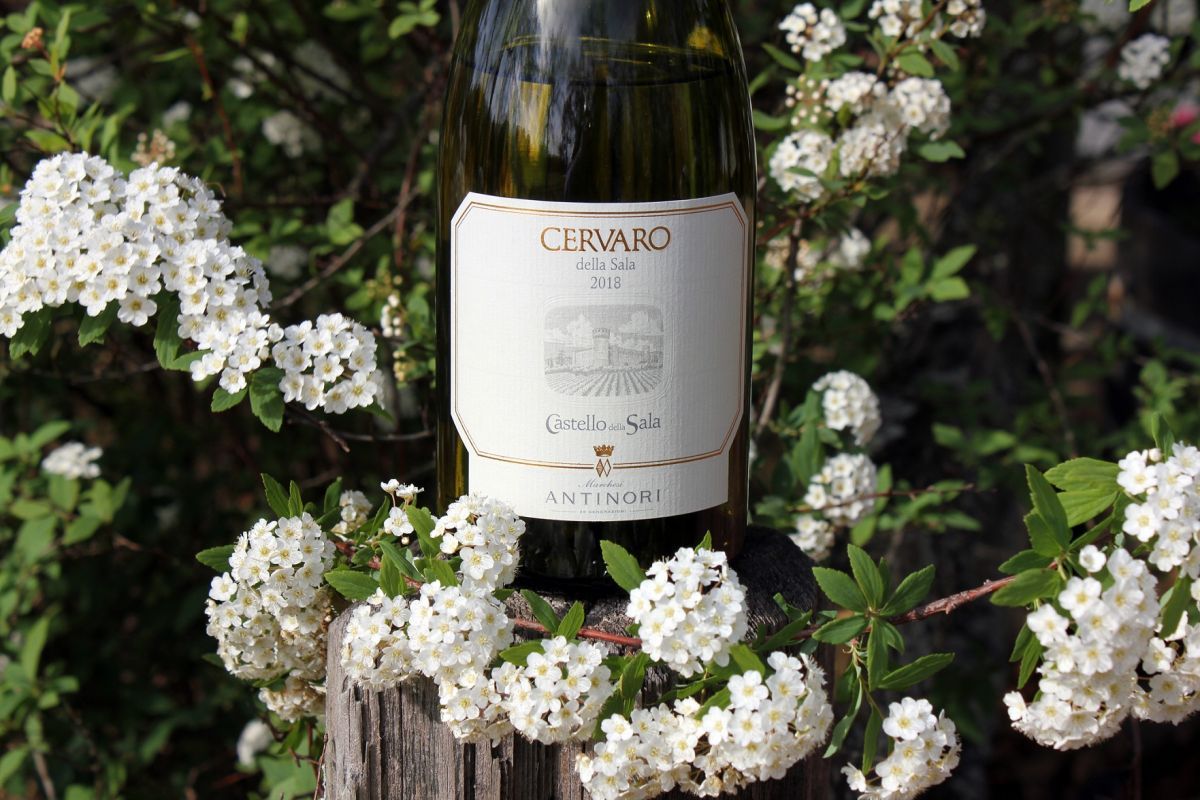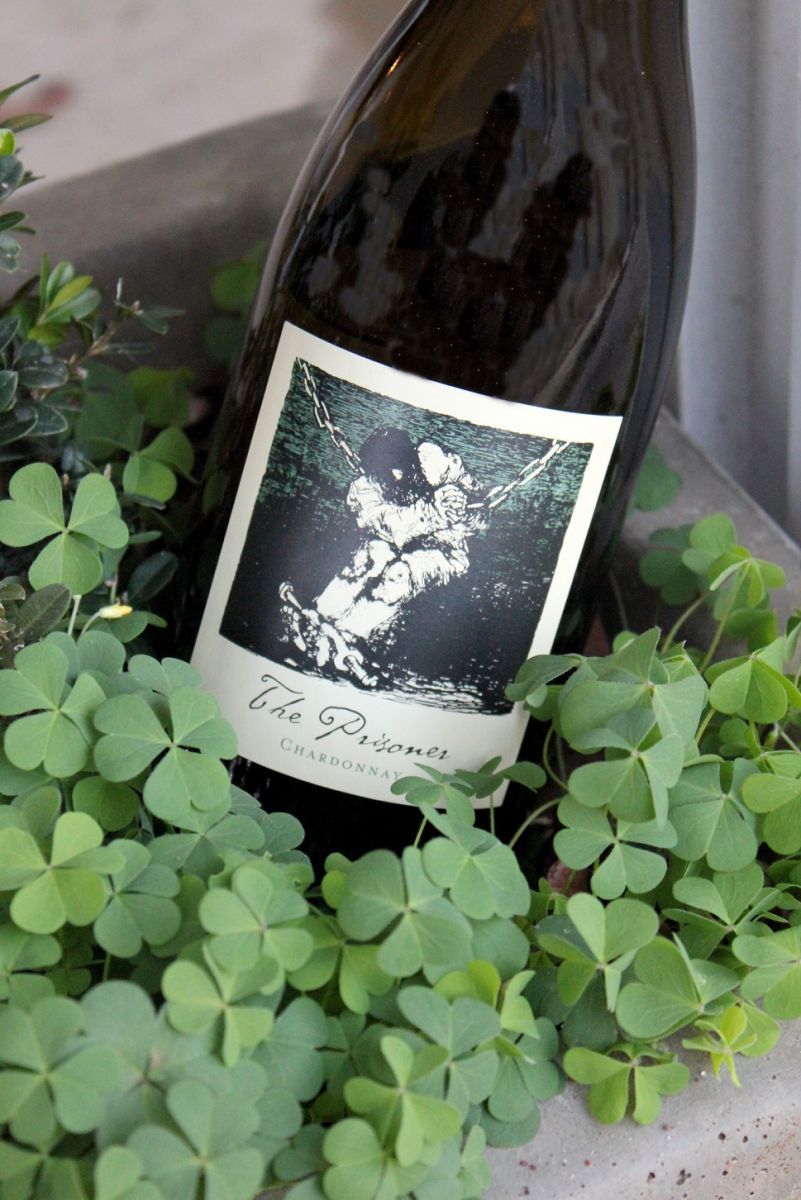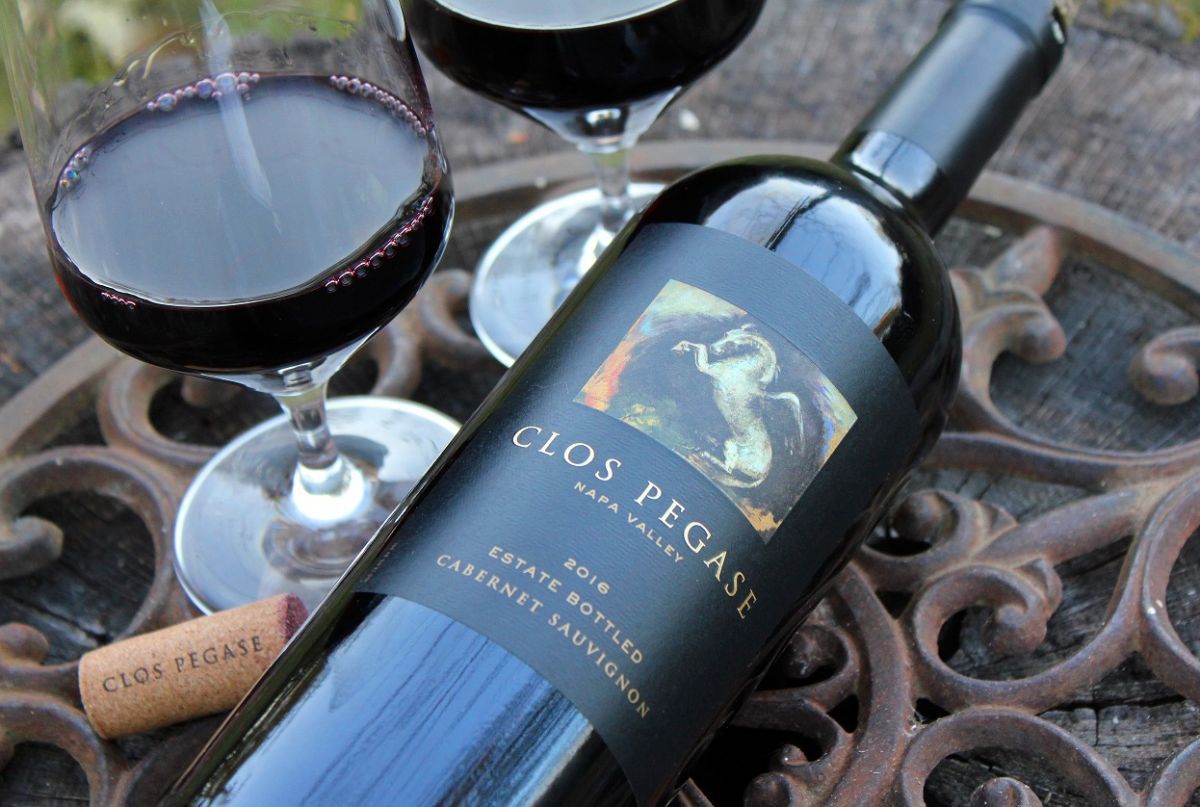Paso Robles Chardonnay
Wine Club by FRESH
Wine of the Month: Prominence Chardonnay Prominence wines are crafted as a reflection of the region where the fruit is grown. From fluctuating temperatures to ranging elevations, the geographical diversity of Monterey County offers unparalleled conditions for producing rich, premium wines.
Varietal of the Month: Paso Robles Chardonnay Paso Robles is a Central Coast wine growing area halfway between Los Angeles and San Francisco. 88 percent of the wine produced in Paso Robles is red and the area is mostly known for award-winning Cabernet Sauvignon.
However, the 8 percent of Chardonnay that is grown is equally spectacular, thanks to a long growing season. Its more Southern location offers a Mediterranean-style climate that brings the warm days and cool evenings that wine grapes need to vibrantly ripen and transform into dynamic flavor profiles that translate beautifully in your glass.
Food Pairings: seafood, light sauces, fruit, soft cheese, chicken
Winery of the Month: Belle Glos
Belle Glos showcases distinctive Pinot Noirs produced from California’s most noteworthy coastal wine-growing regions. While each vineyard location lies near the Pacific Ocean, the climate differences are significant, varying with the amount of fog, wind, sunlight, and soil type at each site. Each Vineyard Designate is crafted to distill the purest essence of the locale into elegant expressions of California Pinot Noir.
Owner/winemaker, Joe Wagner chose the name Belle Glos to honor his grandmother, Lorna Belle Glos Wagner. Lorna was a co-founder of Caymus Vineyards, an inspirational figure to Joseph and an avid lover of Pinot Noir.
By the time he was 19 he knew that he would continue his family’s winemaking legacy, working alongside his father at Caymus Vineyards. In 2001, he created Belle Glos, with a focus on vineyard-designated Pinot Noirs from throughout California’s best coastal regions.
More recently, he has launched a number of new brands under Copper Cane Wines & Provisions. Joe has a keen interest in contributing to the evolution of the wine industry, by discovering new wine growing locations and through experimentation in the cellar.
Belle Glos Pinot Noir Clark & Telephone Deep purple with flecks of garnet in color with lavish aromas of warm blackberry pie, raspberry, licorice, and white pepper. Bold and sophisticated on the palate with flavors of dry cherry, crushed lavender, and chocolate covered blueberries. The texture is rich and velvety which leads to a long, structured finish.
Food Pairings: grilled salmon, pork, aged cheese, pasta with creamy sauces
Winery of the Month: Ruffino
Wine Club by FRESH
Winery of the Month: Ruffino
In 1877 cousins Ilario and Leopoldo Ruffino embraced their passion for winemaking by establishing a small winery near Florence. Even though the region already had a centuries-old tradition of growing exceptional wine grapes, the two Tuscan natives felt certain that much of the area’s greatness had yet to be revealed. Tuscany’s good fortune included mineral-laden soil, sun-drenched hills, the cooling influence of the Mediterranean Sea and dry summers that wine grapes favor.
The Ruffino brothers assembled a collection of top estates in Tuscany’s most important fine wine appellations. With 6 different estates, Solatia – which means bathed by the sun – is just outside the famous medieval walled village of Siena. The climate of this hilly region is warm and very sunny. Ruffino was one of the first producers to recognize the potential for world-class white wines from Tuscany. In particular, the northern Siena terroir of La Solatia possesses all the characteristics for producing uniquely expressive Tuscan white wines.
Orvieto Classico
The grapes that make up Ruffino Orvieto Classico come from the best-known DOC wine-growing regions of Orvieto Classico -- Grechetto 40%, Procanico 20% and 40% other white varietals (Verdello, Canaiolo Bianco.) The chalky limestone soil along with ancient remnants of volcanic soil, gives a unique character to the wines. The Orvieto bouquet is distinctive; fruity and flowery with hints of fresh picked meadow flowers, citrus fruits, golden apple, finishing with a mineral touch. This straw yellow wine has smooth, refreshing flavors, and balance beautifully with its structure and acidity. Orvieto also offers a unique mineral character that comes from the chalky limestone soil called tufa. The finish is long and fragrant, with hints of almond.
Food Pairings:
Crostini, grilled vegetables, cold soup, grilled fish, mild cheese.
Duckhorn Vineyards
Wine Club by FRESH
Winery of the Month: Duckhorn Vineyards Founded by legendary vintners Dan & Margaret Duckhorn in 1976, Duckhorn Vineyards is an iconic Napa Valley winery. After falling in love with Merlot during a visit to Bordeaux, Dan Duckhorn started producing Duckhorn Vineyards Merlot in 1978. In the years since, grapes from the Napa portion of Carneros have played a pivotal role in their Napa Valley Merlot program. Influenced by the cooling effect of the Pacific Ocean, Carneros is ideally suited for growing exceptional Merlot, yielding a wine with beautiful structure, velvety texture and lovely layers of plum and mulberry. Duckhorn Merlot Crafted using grapes from Napa Valley’s finest Merlot vineyards. This benchmark wine combines both mountain and valley-floor fruit to create an impeccably balanced Merlot with signature flavors of black cherry, plum and spice. With tantalizing aromas of cranberry, pomegranate, Bing cherry and crushed rose petals, this alluring wine embodies the cool-climate essence of a great Carneros Merlot. The vibrant red berry layers are echoed on the energetic palate, where they are framed by dusty, fine-grained tannins, with sophisticated hints of the sage, sweet tea and baking spices emerging throughout a long, resonant finish. Food Pairings: Pork roast, lamb, steaks, chocolate desserts, fresh berries
Justin Vineyards
Wine Club by FRESH
Winery of the Month: Justin Vineyards Great wine begins with the best soil and the best climate. Justin Vineyards is blessed with both. Rich in limestone, the soil combines with a unique microclimate to produce ripe, intensly flavored grapes. Then they employ artisanal techniques typically reserved for the most revered labels, such as hand-harvesting, hand-sorting, and small oak barrel aging. The result is wines that are beautifully balanced, with aromas of black fruit and spice. Justin vineyards and winery started in 1981 with a plan to make Bordeaux-style blends. The soil in their four Paso Robles vineyards is ideally suited for growing Bordeaux-style reds. The limestone stresses the vines, producing grapes that fully express their varietal character. Also, the climate offers wide day-night temperature swings. The hot days allow the grapes to develop intense flavor, while the cool nights create great structure and balance. Justin Cabernet Sauvignon Bright with a deep ruby core that lightens at the rim of the glass, with moderately thick, slow forming tears. On the nose, the wine is aromatic with ripe black cherry, red berries and blackcurrant fruit with spice notes of vanilla and cinnamon with fresh sage, subtle dried rose petal and toasted oak. On the palate, it is full-bodied with red plum, ripe bing cherry, and blackberry on entry with savory dried herbs, baking spice and toasted oak on the midpalate supported with balanced, fine tannins. The complex finish shows sustained ripe fruit and spice mixed with dried flower and camphor elements. Food Pairings: Steak, pork, rich sauces, strong cheese
Cline Cellars
Wine Club by FRESH
Winery of the Month: Cline Cellars Cline Family Cellars started in 1982 in Oakley, California, when Fred Cline made his first vintages from original plantings of Mourvèdre, Zinfandel, and Carignane. Some of these vines dated back to the 1880s and were still viable. In 1989, he and his wife purchased a 350-acre horse farm in Sonoma-Carneros and moved the winery there. Early on, it was important to the Clines make the vineyard a safe place for family members, animals and nature. No pesticides or herbicides were used to grow the grapes and they farmed sustainably, using cover crops and compost teas to nourish the soil. Also, sheep to control the weeds and create healthy vines now and for the next generations. They are currently Certified California Sustainable and Sonoma County Sustainable. Cline Cashmere Red Blend A blend of Mourvedre, Grenache and Syrah combine for seductive flavors of cherry and blueberry intermingled with secondary notes of cracked black pepper and cooking spice. Smooth, elegant and delicious, the wine offers aromas of dark fruit and chocolate. 60% of the grapes used in Cashmere come from Sonoma Coast Vineyards and the rest from the Contra Costa Vineyards. Sonoma Coast is known for its cool breezes, fog layers and proximity to the Pacific Ocean. These vineyards are late ripening and produce extraordinary and delicious Syrah and some Grenache. The Contra Costa Vineyards are some of the oldest in California and the world. With sandy soils, these vineyards are dry-farmed and own-rooted. They have stood the test of time and produce mouth-watering Mourvedre and Grenache. Food Pairings: Paella, rich sauces, strong cheese, red meat
Bonterra Organic Estates
Wine Club by FRESH
Winery of the Month: Bonterra Organic Estates A leader in organic viticulture, Bonterra grows their fruit in certified-organic vineyards without the use of synthetic pesticides, herbicides or fertilizers. A combination of eco-friendly farming practices further enhances soil health and vitality and leads to pure and flavorful fruit. These practices include applying compost, planting cover crops, limiting tillage, and animal grazing for natural weed control and soil fertility enhancement. After harvest, the grapes are brought to the winery which is certified by California Certified Organic Farmers’ Made with Organic Grapes standards. The wine is made with one-third or less of the permitted amount of sulfites allowed in conventional wines. The grapes are never grown with GMOs, and much of the packaging material is recycled. Third-party audits ensure the growers and winery continue their commitment to strict guidelines relating to the natural environment, quality of grapes and wine, and sustainable and organic practices, from soil to sip. Bonterra Sauvignon Blanc Intense aromas of grapefruit, citrus, kiwi and fresh cut grass greet the nose. As you drink, the crisp acidity gives the wine a fresh vibrant feel with flavors of grapefruit, lime zest and grass that closes with favors of melon and a nice tart finish. Food Pairings: creamy sauces, soft cheeses, fish, chicken
HOPE FAMILY WINES
Wine Club by FRESH
Winery of the Month: Hope Family Wines The Hope Family winery has created some very well-known wine brands like Liberty School, Austin Hope, Treana, Quest and Troublemaker. Located in Paso Robles, California, the Hope family has been farming for more than 30 years. When they arrived in this barely discovered region, they planted apples and grapes. Little did they know that the rolling, oak-studded terrain of Paso Robles would one day become a viticultural terroir of significance and one of the top winegrowing regions for quality red wine within the Central coast of California. Treana Cabernet Sauvignon Treana is your quintessential Paso Robles Cabernet Sauvignon. From the depth of color and intense nose, this wine is made with structure and purpose. On the palate, flavors of beautiful rich blackberry, warm vanilla, toasted coffee and black cherry are finished with firm but refined tannins. Treana is inspired by the Spanish word for the trinity of elements that make Paso Robles an exceptional region for growing wine grapes: the sun, soil, and sea. The Paso Robles area provides an abundance of sunshine during the growing season, creating idyllic conditions. The most important element, the soil, is one of the most unique and diverse of any winegrowing region. The sea attracts us to this beautiful region and creates ideal growing conditions. The proximity to the Pacific Ocean, sends cooling breezes every afternoon, causes large temperature swings from day to night. This temperature variation preserves the natural acidity in the grapes. Food Pairings: Steak, grilled meats, paella, sausages
HOPE FAMILY WINES
Wine Club by FRESH
Winery of the Month: Hope Family Wines The Hope Family winery has created some very well-known wine brands like Liberty School, Austin Hope, Treana, Quest and Troublemaker. Located in Paso Robles, California, the Hope family has been farming for more than 30 years. When they arrived in this barely discovered region, they planted apples and grapes. Little did they know that the rolling, oak-studded terrain of Paso Robles would one day become a viticultural terroir of significance and one of the top winegrowing regions for quality red wine within the Central coast of California. Troublemaker Red Blend In Austin Hope’s younger days, he was something of a troublemaker. And on those days when his schoolwork or attitude didn’t quite live up to the family’s expectations, he was sent to the vineyards for a hard day’s work meant to teach him a lesson. Little did they know that this childhood punishment would be the beginning of a life-long passion and career. It was in those days spent in the vineyards, the Paso Robles sun beating down and his hands in the dirt, that Austin found inspiration for his life’s journey. Made from Syrah, Petite Syrah, Mourvedre, Grenache and Zinfandel, the Troublemaker blend is an opaque deep purple color with powerful aromas of ripe cherry, dried plum and savory sage. The palate entry is somewhat of a surprise as the finesse of black currant, hints of sweet oak and espresso lead to soft yet firm tannins that linger. Food Pairings: Steak, grilled meats, tacos, burgers
CAYMUS VINEYARDS
Wine Club by FRESH
Chuck Wagner and his late parents, Lorna and Charlie, started Caymus Vineyards in 1972. They were a family of farmers with roots in Napa Valley dating back to the 1850s. Today, the family’s two Cabernet Sauvignons – Caymus Napa Valley and Caymus Special Selection – are among the region’s most celebrated wines. Chuck now works alongside two of his children, Charlie and Jenny, and the family produces diverse wines from Napa Valley, other parts of California and beyond. Continually pursuing new ideas, they feel extremely fortunate to spend their days farming grapes and making wine. Wine of the Month: Conundrum White Blend Conundrum White was created by Charlie Wagner Sr., while experimenting with blending different varietals. His goal was to find the perfect pairing for his dinner. He had no idea, at the time, that blending would become such a trend. With food in mind, Conundrum is designed to be very versatile and brings a balance of 5 varietals – Chardonnay, Sauvignon Blanc, Semillion, Muscat Canelli and Viognier. Sourced from California’s premier winegrowing regions, the wine is exotic and bright. While the exact breakdown is a secret, The Chardonnay brings weight and complexity, Sauvignon Blanc and Semillion offer acidity, Muscat Canelli possesses floral qualities and Viognier a lush texture. It lures you in with scents of apricot, pear and honeysuckle, and if you’re paying attention, orange and lemon meringue pie. Initial sweetness is balanced by natural acidity, and there is a hint of oak that plays with flavors of peach, apple and citrus. The long finish will leave you longing for another glass. Food Pairings: Fajitas, seafood, salads, Thai & Indian food
UPPERCUT WINE
Wine Club by FRESH
Provenance Vineyards is the joint venture of three passionate winemakers, Tom Rinaldi, Chris Cooney, and Trevor Durling; their first vintage, in 1999, established the winery’s style: an elegant yet powerful richness with deep, intense flavors that reflect the vintage and vineyard. Uppercut is the winery’s second label and the wines are made by Cooney. The whole idea of Uppercut is producing an affordable Cabernet from one of the world’s premier winegrowing regions. Fortunately, winemaker Chris Cooney has access to fruit from some of Napa’s best valley, bench and mountain vineyards. This gives him the latitude to create a wine that is rich, complex and consistent from vintage to vintage. Wine of the Month: Uppercut Cabernet Sauvignon Cabernet Sauvignon grapes from prime California vineyard give Upper cut an elegant, dark-fruit character and velvety texture. The rich, expansive flavors abound with lush blackberry, black cherry and cocoa expressions, while layers of spice and espresso linger on the fruit-infused finish. Structured with firm yet approachable tannins, this Cabernet Sauvignon marries perfectly with sizzling grilled steak. Also, its plush texture carries the rich dark-fruit flavors through the lingering finish. Food Pairings: Steak, strong cheese, heavy sauces, pasta
ALEXANDER VALLEY VINEYARDS
Wine Club by FRESH
Winery of the Month: Alexander Valley Vineyards: In 1962, Harry & Maggie Wetzel purchased the Alexander Valley vineyards when the Alexander heirs decided they no longer wanted to keep the land in the family. The Wetzels had traveled to many of the world’s great wine regions and dreamed of being in the winemaking industry. They had 24 hours to make a decision and Harry knew the Alexander Valley area of Sonoma County had untapped potential. Even though they hadn’t seen the property, it was a deal they couldn’t pass up. They got to work, even the children, replanting the vineyards and learning about winemaking. They bottled their first Cabernet Sauvignon in 1968 and kept working to grow the property and improve the vines. Alexander Valley Vineyards wasn’t officially created until 1975 by their son, Hank. The Wetzel family and the Alexander Valley vineyards continued to grow over the years and in 1984, the region received an official appellation status. The area is now home to more than 100 wineries and some of California’s most respected wine labels. Wine of the Month: CYRUS Showcasing the best of our vineyards and the best of the vintage. In 1840 Alexander Valley namesake Cyrus Alexander rode into the valley and called it the “brightest and best spot in the world.” He chose this spot to build his home and raise his family, and many years later the Wetzel family would do the same. This wine is a tribute to the man, the region and the very best of the vintage. In 1995 Hank Wetzel produced the first vintage of CYRUS, today winemaker Kevin Hall has selected ten distinctive lots of estate Bordeaux grapes, anchoring the blend with three complex lots of Cabernet Sauvignon. After harvest each lot was fermented and aged separately for 12 months, then blended to showcase the vintage and aged for an additional 12 months in French oak barrels to meld the flavors. Additional bottle aging results in a seamless blend. With a dark purple/red color and layered aromas of cassis, black cherry, black plum, cedar, dark chocolate, and hints of toasty oak and vanilla, this is a silky wine with flavors of cassis, dark chocolate, dark fruits, black cherry, barrel spice and cardamom. It has a smooth texture, excellent balance and a long structured finish. As this wine sits in the glass it keeps building on itself, hinting at the complexity that will occur with additional cellar aging. Food Pairings: Red Meat, Dark Sauces, Aged Strong Cheeses
THE PRISONER WINE COMPANY
Wine Club by FRESH
Located in Napa Valley, The Prisoner Wine Company works with over 100 growers in northern California to bring together the most exceptional fruit to produce a family of intriguing wines unrestricted by tradition. Although rosé is an old-world creation its popularity is widespread in the U.S. and a go-to favorite for summer and day-drinking. Varieties from France, Spain and around Europe often have more acidity and less alcohol. While the California rosé is more aromatic, with minerality and fruit forward flavor. Wine of the Month: The Prisoner Wine Company Unshackled Rosé Bright and crisp with juicy tropical fruit characteristics. Featuring aromas of citrus with a hint of strawberry and melon. Flavors of grapefruit, tangerine, and lemon with bright acidity result in a refreshing rosé with vibrant acidity and a crisp finish. Rosé is usually made from red grapes that are left over from the winery’s production of their red wine varietals. The Prisoner Wine Company has blended Pinot Noir, Syrah, Grenache and Mourvedre grapes that compliment and challenge each other. The Unshackled label represents the wine being liberated for all to enjoy. The delicious and daring combinations showcase the best of what California has to offer. Unshackled is potential unleashed. Pleasure unbottled. Taste unparalleled. It’s what happens when you take off the cuffs and unlock a great bottle of wine. Food Pairings: Red berries, light sauces, creamy cheese, olives, salad, sushi, shellfish
FROG'S LEAP
Wine Club by FRESH
Clean, fresh, minerally… a transparent view into the soils of Rutherford Valley. Since 1981 Frog’s Leap Sauvignon Blanc has been exactly what the winemakers feel a Sauvignon Blanc should be. It is a dry wine of substantial scale that carries itself well, as it retains a delicacy to complement food, not overwhelm. This is how they described the wine more than 40 years ago and these are the same words they still use. They’ve consistently stayed true to the original ideals and characteristics of the wine. It is made from 100 percent Sauvignon Blanc grapes from 6 different vineyards representing the best quality Sauvignon Blanc grapes of the season. The vines are farmed in such a way as to keep the alcohol low, the acidity high, and the flavors crisp, refreshing and complex. Any changes made over time have served to enhance the wine and reinforce their ideals. They’ve moved to stainless steel fermentation to preserve freshness; organically- certified and dry-farmed vineyards to deepen their connection with the soil; increasing amounts of estate-grown fruit, to allow them to fine-tune the vines to their liking; brief skin contact and aging on the lees to give depth and complexity. All of this has brought the wine forward in a noble pursuit and to make a Sauvignon Blanc that is so indicative of the place in which it is grown, that it could come from nowhere else. JW For several years now, Frog’s Leap has been experimenting with holding the wine for a longer time before bottling. So far, the results have been positive, and the 2020 vintage saw the longest sur lie aging to date. The wine was given seven months on its lees. The extra lees contact gives this vintage a little more of everything they love about Sauvignon Blanc — more intense mineral and floral aromas, bright fruit, and a bit of extra density on the palate. Food Pairings: Seafood, shellfish, chicken, light cheeses and sauces.
CASTELLO DI MONSANTO
Wine Club by FRESH
After being forced to leave his home in Tuscany during World War II, Aldo Bianchi returned to attend a wedding at Castello di Monsanto. He was struck by the beauty of the magnificent estate near his hometown of San Gimignano. He worked to acquire the medieval property and he and his wife Giuliana set out planting new vines and renovating the castle and farmhouses. Castello di Monsanto is located halfway between Florence and Siena. The Bianchi family has been producing Chianti Classico for more than 50 years and have celebrated family, passion and excellence in winemaking since their first release in 1962. A village of ancient Etruscan origin, the name and locality of Monsanto dates back to 998 A.D. Long before the Bianchi family arrived, the Sangiovese grape has grown at Monsanto for over 200 years. Wine of the Month: Monsanto Chianti Classico DOCG Riserva Made from 90% Sangiovese grapes, Chianti Classico Riserva is a rich, intense and complex wine with distinct notes of spice, brilliant flavors of red berry fruit, outstanding acidity and nicely weighted tannins. An accessible example of the unique style and character of Castello di Monsanto wines. This multi-faceted wine can be enjoyed now or left to develop and evolve as the years roll by. It is the most widely produced Monsanto wine, underlining the company’s belief in Sangiovese, which acquires strength and energy from the soil that must be patiently awaited. Monsanto is one of the oldest wines in Italy, it appeared on the market in the 1960s and has become an ambassador for the entire denomination around the world. Decanting is recommended for one hour before serving. Food Pairings: Beef, Pork, Marinara Sauce, Roasted Meat, Hard Cheeses, Salami. Sangiovese wines from the Chianti region have high tannins and acidity. They are balanced by rich flavors and fats like those found in red meat, butter and olive oil.
LOS CARNEROS
Wine Club by FRESH
As the world’s most popular and versatile wine, Chardonnay really needs no explanation. But winemakers know that Chardonnay grapes can’t just be grown anywhere. The success of a Chardonnay relies heavily on the location, soil and climate of where it is grown. In recent years, many California Chardonnay enthusiasts have learned some of the best Chardonnay wines are coming from an American Viticultural Area that lies in both Napa and Sonoma county called Los Carneros. Because of its location, near San Pablo Bay, these 9000 acres of vineyards possess their own microclimate. The proximity to the Pacific Ocean makes it cool, windy and damp and attributes to the wine’s acidity and roundness. The moisture-retaining clay soil puts less stress on the vines root system allowing for a longer growing season. This gives the grapes a chance to stay on the vine longer and let flavors mature. Wine of the Month: Truchard Chardonnay An intense nose of pineapple, baked apples, and honeysuckle with hints of nutmeg, fig and toasted oak. The mouth is clean and bright filled with flavors of fresh pear, quince, and lemon zest. Firm acidity provides a crisp finish of citrus, mineral, and spice. Grown in the southern part of the Truchard Estate Vineyard, the vines range from 24 – 46 years old and benefit from the various marine soils, gently sloped terrain, and cooler temperatures of the Carneros area. They produce aromatic wines with tropical fruit characteristics and a unique spicy element. Barrel fermented in French oak for 10 months. A partial malolactic fermentation allows the wine to retain its natural acidity, while regular stirring of the lees gives added complexity and richness. Food Pairings: Chardonnay that has been through both oak aging and malolactic fermentation pair best with meats such as chicken, lean pork and veal. Creamy sauces and mild cheeses help balance the acidity and minerality.
PATZ & HALL
Wine Club by FRESH
As the world’s most popular and versatile wine, Chardonnay offers a range of flavors. From rich and buttery to crisp and light. The Chardonnay grape originated in Eastern France in the Burgundy region but is now prominent throughout the world. It is very adaptable to the climate where it is grown. In cool climates the grape takes on more fruit flavor and in warm climates it has soft sweet flavors of honey and butter. Throughout history it is traditional to ferment Chardonnay in oak barrels. Especially, Chardonnay wines from California. However, more wineries are starting to age and ferment the wine in concrete or stainless steel tanks. Unoaked or stainless chardonnays are not aged in oak barrels so they do not have that buttery, creamy flavor you expect from a chardonnay. Instead, these wines are crisp, light and have prominent citrus flavors. Oak-aged Chardonnay has a buttery or creamy flavor because it also goes through a secondary fermentation called malolactic fermentation. During this process, some or all of the tart malic acid is transformed into softer lactic acid. This turns the wine from crisp to fat and brings to play the buttery flavor. Wine of the Month: Patz & Hall Chardonnay Aromas of ginger, guava and creme brulee with toasted almond, and toffee-brown sugar. Dense, and full bodied, there’s a pleasingly crisp and mouthwatering green apple note on the palate that melds with dried apricot, tangerine flavors along with a hint of toasted oak. Patz & Hall was founded in 1988 by two couples, James Hall & Ann Moses and Donald & Heather Patz. After working together for another winery, they were inspired by a trip to Burgundy where they learned more about crafting exceptional Chardonnays and Pinot Noirs. They were led to find cooler growing sites for their California wines and sought out a distinct terroir in Napa Valley for Chardonnay and the Sonoma Coast for Pinot Noir. They’ve become well-known for their outstanding collection of each varietal. Food Pairings: Chardonnay aged in oak pairs best with food that has a buttery or creamy sauce and mild cheeses. Chardonnay that has been through both oak aging and malolactic fermentation pair best with meats such as chicken, lean pork and veal.
ARGYLE PINOT NOIR
Wine Club by FRESH
As a red wine, Pinot Noir is light to medium body with bright acidity, soft fruit and translucent color. The nose often outweighs the palate with heavily perfumed scents of dark fruit and spices. Originating in France, Pinot Noir is one of the oldest grapes used for wine and is also harder to grow and less prolific than varieties like Cabernet Sauvignon or Merlot. It prefers cooler environments and soil that has good drainage. While the grapes prefer moisture and less heat, the roots prefer to be dry. The word Pinot is French for pine, as the grapes grow in clusters that resemble a pinecone. Noir is French for black or night. Pinot Noir grown in Oregon is exposed to a milder climate than a pinot noir from California. With more rain and less sunshine, an Oregon Pinot Noir, like Argyle, will have a more delicate structure, lighter color and nuanced fruit flavors. Wine of the Month: Argyle Pinot Noir, Williamette Valley, Oregon Argyle Pinot Noir highlights the elegance and complexity of the Willamette Valley, showcasing the purity of fruit and nimble texture the region has to offer. Fermented entirely in small, 1.5 ton lots and plunged by hand, the vintage leans red cherry, pomegranate, and spiced tea. Fresh, vibrant acidity is framed with polished tannin along with silky texture and persistent length. This wine celebrates the simplicity and purity of fruit that comes from a growing season filled with warm days and cool nights. Food Pairings: A versatile wine with food, Pinot Noir can be paired with salmon, pork, chicken and most fruits and vegetables. Also, earthy flavors like mushrooms, winter squash and greens.
CANVASBACK CABERNET SAUVIGNON
Wine Club by FRESH
Washington State wine country is rising in popularity and gaining a reputation for outstanding Cabernet Sauvignon. These fruit forward wines have flavors of black cherry, blackberry, chocolate, leather, graphite, mint and dried herbs. They are full-bodied with a velvety texture and pair well with a variety of meats, roasted vegetables and rich chocolate desserts. Cabernet Sauvignon is the most widely planted grape and Washington’s varied geological regions make it well suited for this varietal. Experts tout these wines as having “the perfect combination of ripeness of fruit that California Cabernet possesses with the finesse and structure of Old World Cabernet”, like a Bordeaux. The three most popular viticultural areas include Walla Walla, Red Mountain and Horse Heaven Hills. Wine of the Month: Canvasback Red Mountain Washington State Cabernet Sauvignon This beautifully aromatic wine begins with luxurious layers of ripe strawberry, damson plum, and grenadine, as well as spicy notes of cinnamon and clove. The palate is inviting and rich, offering energetic tannins that frame the brambly fruit, and oak-inspired accents of cocoa and graham cracker. Bright and supple, this juicy expression of Red Mountain Cabernet glides to a long, complex finish, with hints of earth and generous red berry flavors. In 2012, building on 35-year history of making globally acclaimed Cabernet Sauvignons, Duckhorn came to Washington State’s Red Mountain to make its debut Canvasback Red Mountain Cabernet Sauvignon. Though Red Mountain is one of the smallest appellations in Washington State, it is one of the most widely renowned. Named for the Canvasback duck, which is native to the Pacific Flyway, this wine was crafted from grapes cultivated by some of Red Mountain’s finest growers. 84% Cabernet Sauvignon, 11% Merlot, 2% Mourvedre, 2% Petit Verdot, 1% Syrah Food Pairings: Braised short ribs, veal chops, lamb shanks, game meat, roasted chicken, burgers, roasted winter vegetables and burgers.
FRANK FAMILY VINEYARDS
Wine Club by FRESH
Frank Family Vineyards started in 1992 when owner Rich Frank, formerly the President of Walt Disney Studios, purchased an old historic winery that was built in 1884. Since then, the Frank family has poured their passion for grape growing and winemaking into each and every bottle of wine. The vineyards have grown to 450 acres throughout Napa Valley. Along with winemaker, Todd Graff, they have been able to cultivate sustainable, quality wines that demonstrate a love of the land and the legacy of the region. Wine of the Month: Frank Family Cabernet Sauvignon A beautiful wine from a near-perfect vintage, this robust Cabernet Sauvignon shows balance and complexity – a blend of dark berry, generous oak notes, clove, and nutmeg. This is a supple and complex wine, full-bodied in style, with a punch of power, ripeness, and elegance from start to finish. Sourced from the family owned S&J Vineyard in Napa’s Capell Valley and Benjamin Vineyard located on the valley floor in the heart of Rutherford. Aged for 20 months in 33% new and 67% once and twice filled French oak barrels. Food Pairings: Beef, Pork, Aged Cheeses, Chocolate, Figs and Dark Fruit
CHIANTI CLASSICO DOCG
Wine Club by FRESH
Italy’s most well-known wine, Chianti Classico DOCG, is made with Sangiovese grapes from the Chianti territory. This medium-bodied red wine is known for its tart, acidic fruit flavors and high tannins. As a territory of Tuscany, Chianti Classico’s DOCG designation means the method of production and quality is controlled and guaranteed by traditional and certified techniques. DOCG is a certification given out by the Italian government and is an abbreviation for Denominazione di Origine Controllata e Garantita. The territory of Chianti spans between the cities of Florence and Siena. Only wines that have been grown and produced within the Chianti zone can bear the name Chianti Classico DOCG. The DOCG band at the top of the bottle ensures its authenticity and quality. Some bottles will also have the 1716 Gallo Nero logo (black rooster) which symbolizes the longstanding heritage of the Chianti area. This can be seen on the back of the Tenuta Di Arceno bottle. The legend of the black rooster dates back to medieval times, when the citizens of Florence and Siena fought for many years over who would control the Chianti territory. The dispute could not be resolved so they created a knight’s challenge. A knight from Siena and a knight from Florence would ride from their respective city at dawn. Where they met would be where the border would be placed. The crow of a black rooster in each city would signal when to start. The rooster from Florence had been kept in the dark and not fed for several days. For this reason, the rooster began crowing earlier and the Florentine knight left earlier and rode further. This allowed Florence to control most of the Chianti territory. Wine of the Month: Tenuta Di Arceno Chianti Classico Tenuta di Arceno is a historical winery situated near the medieval village of San Gusme on the rolling hills of Chianti. This is a powerful Chianti Classico with big, bright fruit and high acidity. The nose displays ripe berries, roses and vanilla bean with undertones of cypress and white pepper. On the palate, the flavors are soft, while the finish shows tart citrus character with hints of black licorice and clove. The wine possesses all the typical characteristics of Sangiovese from Tuscany: aromas of wild violets, good acidity and balanced tannins. Food Pairings: Pizza, Eggplant Parmesan, Spaghetti Bolognese, Chicken Parmesan
ITALIAN BAROLO
Wine Club by FRESH
Barolo is an Italian red wine made exclusively in the Piedmont region of Italy. Its production is certified by the Italian government and has been given a DOCG certification (Denominazione di Origine Controllata e Garantita) that guarantees the specifications, location, type of grape and production techniques that are part of the strict guidelines that must be followed when making Barolo. Made from Nebbiolo grapes, Barolo is known as one of Italy’s finest wines with strong tannins, high acidity, and intense floral aromas. Nebbiolo grapes bud early in the season but are often one of the last varieties to ripen. The unique terrain, weather and growing conditions in the Piedmont region has given Barolo the reputation of being the “king of wine and the wine of kings.” Wine of the Month: Michele Chiarlo Barolo Deep garnet color with complex notes of rose petals, juniper berries and fine spices. On the palate, the wine has good structure with fresh acidity, silky tannins and hints of crushed raspberry, juicy cherries, licorice and clove. Made with Nebbiolo grapes, the Barolo from this vintage has a marked richness and aromatic elegance with notes of sweet fruit and spice. The palate is silky, with tannins that linger. It is a great vintage that can be enjoyed young but it also has aging potential. The wine has been aged for 24 months in oak casks before refinement in the bottle. Food Pairings: Fettuccini with porcini, braised red meat, well-matured cheese
CASTELLO DI MONSANTO
Wine Club by FRESH
After being forced to leave his home in Tuscany during World War II, Aldo Bianchi returned to attend a wedding at Castello di Monsanto. He was struck by the beauty of the magnificent estate near his hometown of San Gimignano. He worked to acquire the medieval property and he and his wife Giuliana set out planting new vines and renovating the castle and farmhouses. Castello di Monsanto is located halfway between Florence and Siena. The Bianchi family has been producing Chianti Classico for more than 50 years and have celebrated family, passion and excellence in winemaking since their first release in 1962. A village of ancient Etruscan origin, the name and locality of Monsanto dates back to 998 A.D. Long before the Bianchi family arrived, the Sangiovese grape has grown at Monsanto for over 200 years. Wine of the Month: Monsanto Chianti Classico DOCG Riserva Made from 90% Sangiovese grapes, Chianti Classico Riserva is a rich, intense and complex wine with distinct notes of spice, brilliant flavors of red berry fruit, outstanding acidity and nicely weighted tannins. An accessible example of the unique style and character of Castello di Monsanto wines. This multi-faceted wine can be enjoyed now or left to develop and evolve as the years roll by. It is the most widely produced Monsanto wine, underlining the company’s belief in Sangiovese, which acquires strength and energy from the soil that must be patiently awaited. Monsanto is one of the oldest wines in Italy, it appeared on the market in the 1960s and has become an ambassador for the entire denomination around the world. Decanting is recommended for one hour before serving. Food Pairings: Beef, Pork, Marinara Sauce, Roasted Meat, Hard Cheeses, Salami. Sangiovese wines from the Chianti region have high tannins and acidity. They are balanced by rich flavors and fats like those found in red meat, butter and olive oil.
TEMPRANILLO
Wine Club by FRESH
In Spain, Tempranillo is the most widely planted grape in the country and thrives in Spain’s hot, dry climate. Typically, it is the dominant grape in Spanish Rioja wine, and it creates a wine that is full-bodied with fresh fruit flavors. As Tempranillo ages, it takes on a spiciness that is reminiscent of vanilla, tobacco leaf and leather. Tempranillo ripens earlier and is a black grape with dark purple – almost black – skin. It crushes red meaning the interior of the grape is a dark, rich red color. Grapes that crush red get their color from the juice, and not just from the skins, like other red grape varietals. Wine of the Month: Marques de Riscal Gran Reserva Rioja, Spain Intense black-cherry color with violet hues. On the nose it expresses its complex, balsamic, aromatic intensity in perfect balance with the fruit and lightly toasted aromas which recall fine wood. In the mouth it is smooth and full, in harmony with the fruit, with good concentrated tannins, round and with a long, lingering finish. To make their Gran Reserva wines, Riscal use grapes produced by old vines over 80 years old from estate vineyards and brought in from regular local growers. After blending the wines from the harvest, the wine destined to become a Gran Reserva is transferred into French-oak casks where it will remain for up to 3 years, followed by a further 3 years in the bottle prior to release. Marqués de Riscal Gran Reserva is a timeless wine which represents almost two centuries of the winemaker’s skill. It has the traditional style of the Rioja Alavesa, recalling the aspirations of the founders of the bodega back in the 19th century. The experience and know-how of the bodega ensure the best vintages of this wine will keep for 50 years or more in the bottle, preserving a delicious flavour for sure. A wine for eternity. Food Pairings: Tempranillo pairs well with the rich flavors found in Spanish cheese and cured meats. It also matches with many types of red meat, mushrooms and stews.
THE PRISONER WINE COMPANY
Wine Club by FRESH
The Prisoner Wine Company was created in 2000 by winemaker, Dave Phinney. Phinney was well known from his years at Robert Mondavi and his creation of Orin Swift. Prisoner spent several years as a small production sourced from several vineyards throughout Napa Valley and other California wine regions. In 2016 it was bought by Constellation Brands and was launched into a national brand. The winery was opened on the site of the former Silver Oak and Franciscan property and helped cultivate the diverse and artisanal character of The Prisoner Wine Company brand. “Our winemaking philosophy since the very first vintage of The Prisoner was to craft wines that are thought provoking and approachable. All of our wines focus on an experience defined by texture and mouthfeel. This commonality across our portfolio results in bold, fruit forward wines with velvety soft tannins,” Prisoner Wine Company website. Wine of the Month: The Prisoner Cabernet Sauvignon From the most recognized Napa Valley red blend comes a distinct, new wine. Made in the same iconic style as The Prisoner Red Blend, they are redefining taste, once again, with The Prisoner Cabernet Sauvignon. Aromas of black cherry and ripe plum are layered with vanilla and baking spice. Concentrated dark fruit flavors culminate in a lush, full mouthfeel and a lengthy finish. The winemaking team works with a family of growers to source a diverse variety of grapes from premier vineyards throughout California. The resulting wines are interesting blends of distinct quality and character. Hand-picked grapes ferment in bins for 10-20 days to allow the tannins to mature. All lots ferment separately and are pumped two times each day. Only once the tannins have fully developed are the grapes finally pressed, separating the juice from the skins. Primarily made with Cabernet Sauvignon grapes, with a small amount of Merlot, Syrah, Malbec, Petite Sirah and Charbono used for blending. The wine is aged for 15 months in a combination of French and American oak barrels that are 55% new. Food Pairings: Aged Cheddar, Blue Cheese, Duck, Steak, Smoked Fish, Dark Chocolate
CASTELLO DELLA SALA
Wine Club by FRESH
Located in the Umbria region, not far from the Tuscan border, Castello della Sala is about 11 miles from the historic city of Orvieto. The Medieval castle’s property extends over 1200 acres, with 420 acres of vineyards. The altitude varies between 700 and 1500 feet above sea level and the gentle rolling hillsides characterize the beautiful countryside in this area. It is the perfect place for growing white varieties. The vines grow in clay and calcareous based soils that are rich in fossil shells. The vines are well exposed to the rising sun with an excellent difference of temperature between day and night. Wine of the Month: Cervaro della Sala Chardonnay Cervaro is a blend of 85% Chardonnay grapes and 8% Grecchetto grapes. The combination creates a wine that can age over time and represent the elegance and complexity of this unique estate. The name comes from the noble family that owned Castello della Sala during the 14th century, Monaldeschi della Cervara. Cervaro della Sala is a white wine from the Umbria region of Italy and is part of a group of wineries that make up the Antinori Estates. For twenty-six generations, the Antinori family has been making exceptional Italian wines throughout the regions of Tuscany and Umbria. The first vintage of Cervaro della Sala was created in 1985. Cervaro della Sala 2019 is pale yellow in color with notable greenish highlights. Its intense, complex nose shows notes of citrus fruit, pineapples and acacia blossoms that blend harmoniously with hints of vanilla and flint. On the palate, it’s generous, refined and well structured. Pleasant savory notes are well-balanced by typical sweet sensations of hazelnut. Food Pairings: Seafood Pasta, Chicken Alfredo, Creamy Desserts, Soft Cheese
DUCKHORN
Wine Club by FRESH
Founded in 1976 by Dan and Margaret Duckhorn, the Duckhorn Vineyards have become the premier producer of Napa Valley wines. They’ve grown from a single 10-acre estate and vineyard to 7 estate vineyards located throughout the microclimates of Napa Valley. They created the first luxury Merlot in 1979 and are frequently named one of the top 100 wineries in the world. Duckhorn celebrated their 40th harvest in 2017 and have created a full portfolio of award-winning wines from Decoy, Canvasback and Migration to Kosta Browne and Goldeneye. Wine of the Month: Decoy Red Blend With alluring layers of blueberry, blackberry and wild strawberry as well as hints of anise and vanilla, this impeccably balanced wine offers silky tannins and rich, mouthwatering flavors. The finish is lush, elegant and energetic. The core varietals for this appealing Sonoma County red wine combine the elegance of merlot with the complexity of cabernet sauvignon. Reflecting the character of each growing season and the diversity of their vineyard sources, Decoy has established itself as a wine of distinction. Aged in 100% French oak for 12 months, this blend is 52% Cabernet Sauvignon, 37% Merlot, 6% Petite Sirah, 2% Zinfandel, 2% Carignan and 1% Syrah. Food Pairings: Pork, Beef, Rich Sauces, Medium Spice, Aged Cheese
PRISONER WINE COMPANY
Wine Club by FRESH
The Prisoner Wine Company was created in 2000 by winemaker, Dave Phinney. Phinney was well known from his years at Robert Mondavi and his creation of Orin Swift. Prisoner spent several years as a small production sourced from several vineyards throughout Napa Valley and other California wine regions. In 2016 it was bought by Constellation Brands and was launched into a national brand. The winery was opened on the site of the former Silver Oak and Franciscan property and helped cultivate the diverse and artisanal character of The Prisoner Wine Company brand. “Our winemaking philosophy since the very first vintage of The Prisoner was to craft wines that are thought provoking and approachable. All of our wines focus on an experience defined by texture and mouthfeel. This commonality across our portfolio results in bold, fruit forward wines with velvety soft tannins.” – Prisoner Wine Company website. Wine of the Month: The Prisoner Chardonnay Hand-picked grapes are pressed immediately to separate the juice from the skin and seeds. Once the juice has settled overnight, it’s inoculated with yeast and moved to barrels to ferment. After the primary period of fermentation, the barrels are stirred every other week to perfect the wine’s balance and acidity. Bursting with aromas of vanilla, crème brulee, and baked apple. Full-bodied and rich on the palate, flavors of pineapple and toasted oak integrate nicely with the balanced acidity and smooth finish. Food Pairings: Creamy, buttery dishes. Shellfish or meaty, mild fish. Toasted flavors from nuts, bread or pastry. Sweet vegetables like corn, butternut squash or sweet potatoes.
VALPOLICELLA
Wine Club by FRESH
Like most Italian wines, Valpolicella is named for the place where it is produced. This area of wine production near the hills of Verona creates a cool, stable climate for the grapes. The Alps are to the north and the largest lake in Italy, Lake Garda, borders the region. This pocket of land gives Valpolicella protection from the very warm Mediterranean summers. Behind Chianti, Valpolicella has become one of the most prolific Italian red wines. The grapes used to make Valpolicella include Corvina, Rondinella and Molinara. The first two are required to grow and the 3rd is a blending grape that many producers use to balance the wine. The wine is traditionally lighter in body and color and also lower in alcohol content. When making the wine many of the producers practice the method of drying the grapes for several months on bamboo mats before making the wine. As moisture content is reduced, the flavors in the grapes are concentrated. Wine of the Month: Zenato Valpolicella Made from vineyards in the Italian wine region of Valpolicella, the Zenato family wine has an impressive lingering finish with rich flavor. On the nose, it delivers delicate hints of almond, maraschino cherries and violet. On the palate, it’s dry and smooth with good structure and wonderfully robust notes of cherry and prune. The Zenato Valpolicella is made from a grape blend that includes 85% Corvina Veronese, 10% Rondinella, and 5% Corvinone. The vineyards are located near Verona, Italy on approximately 200 acres around the Lake Garda area. From the banks of the lake to the hills of Verona, the valley where the Zenato family vineyards are located have been cultivated since 1960. Food Pairings: Pasta with different sauces, red meat, roasted or grilled meat. Risotto, aged cheese, dark chocolate.
DUCKHORN
Wine Club by FRESH
Founded in 1976 by Dan & Margaret Duckhorn, the Duckhorn Vineyards has become the premier producer of Napa Valley wines. They’ve grown from a single 10-acre estate and vineyard to 7 estate vineyards located throughout the microclimates of the Napa Valley. They created the first luxury Merlot in 1979 and are frequently named one of the top 100 wineries in the world. Duckhorn celebrated their 40th harvest in 2017 and have created a full portfolio of award-winning wines. From Decoy, Canvasback and Migration to Kosta Browne and Goldeneye, they’ve now debuted Postmark in the 2018 vintage. Varietal of the Month: Postmark Cabernet Sauvignon A postmark is an official seal traditionally stamped on letters to indicate a significant place and date. In this debut wine, Postmark showcases Napa Valley’s finest growers of Cabernet Sauvignon. From its deep crimson color to its velvety texture and alluring layers of fresh blackberry, boysenberry and cassis, you can taste the warm Napa Valley sun in this luxurious Cabernet. On the palate, hints of violet, lavender and dark chocolate add to the delicious depth of this wine, with a pleasing touch of acidity bringing brightness and poise to a lush fruit-driven finish. The wine reflects the character of its iconic Napa Valley roots, with inviting layers, silky tannins and a smooth finish. A winemaker from the Duckhorn Portfolio, Christopher Dean, was given the opportunity to make the debut vintage of the Postmark Napa Valley Cabernet Sauvignon. “I love the vision behind Postmark,” he adds. “It reminds me of what inspired me to become a winemaker—the idea that even if someone has never been to Napa Valley, we can make a wine that will transport them there, that will give them a taste of a magical place, and a moment in time.” Food Pairings: Red Meat, Aged Cheese, Chocolate
CLOS PEGASE
Wine Club by FRESH
Opened in the 1980s and located in Calistoga, Clos Pegase boasts a modern California feel. With 410 acres in the Napa Valley, the estate is made up of three vineyards, each with unique characteristics that bring out the very best of the grapes. Within the Clos Pegase winery are 20,000 square feet of caves dug into the volcanic knoll that is behind the winery. Designed with a grand portico entrance that separates the southern side focused on the production of wine and the northern side focused on the enjoyment of wine. The caves follow a similar design element with the southern side of the caves housing barrels in a temperature and humidity-controlled environment perfectly designed for aging the wines. The northern side, on the other hand, includes the unique Cave Theater, a dramatic setting for celebrations and special events. Varietal of the Month: Clos Pegase Cabernet Sauvignon Dark purple in the glass, the aromatics of the wine waft towards the nose, they deliver generous layers of cassis, antique wood, cigar box and black currant. On the palate, brooding dark fruits give way to briar, black currant and forest floor. More subtle notes of graphite, wet clay and seasoned leather, transition across the palate. The tannins are nicely balanced by the lush fruits which are in-turn kept fresh by the crisp acidity. This Cabernet Sauvignon continues to evolve on the palate showing depth and complexity with a lengthy finish. Food Pairings: Red Meat, Aged Cheese, Chocolate


